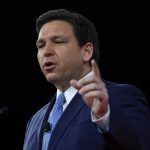Editors’ Blog

Twitter is chock full of hyperbole, ignorance and deception. But one of its special qualities is that if you take some care and follow some basic rules you can find people who you can actually learn quite a lot from. They’re out there. And during chaotic and fast-moving news events you can learn a lot from them. One of those people is Michael Kofman, who is one of the people on my list of people to follow to keep track of developments in the Ukraine Crisis. Among other things he’s the Director of the Russia Studies program at the Center for Naval Analyses, the main Navy/Marines think tank in Washington, DC. His opinions may be right or wrong. But given the Navy’s/Marine Corps’ interest in keeping tabs on the Russian military we can be confident he’s highly knowledgable about that topic specifically. I’ve been following his commentary over the last week or so and yesterday he posted a lengthy Twitter thread about what we’ve seen over the last three days.
Read More Where Things Stand: DeSantis Makes A Big Show Of Rejecting Biden Call For Nat’l Guard Troops Ahead Of SOTU
Where Things Stand: DeSantis Makes A Big Show Of Rejecting Biden Call For Nat’l Guard Troops Ahead Of SOTU
Florida Republican Gov. Ron DeSantis tweeted triumphantly this afternoon that he rejected the Biden administration’s request for states to send National Guard troops to Washington, D.C. ahead of Tuesday’s State of the Union speech.
Read More Should We Be Surprised US Intelligence Got It Right?
Should We Be Surprised US Intelligence Got It Right? 
I wanted to address a few points that have come up in discussions about the Ukraine Crisis in recent days and which John mentions below. I’ll start with the question of U.S. intelligence estimates about an imminent Russian invasion which appear to have been very accurate both in the overall prediction and the specifics of how one would take place.
I’ve seen a number of people say this was a surprise or at least not a given because of the intelligence failure that preceded the invasion of Iraq in 2003.
But I view this very differently.
Read More What I Got Wrong About The US And Russia
What I Got Wrong About The US And Russia
I made several mistakes in judging the conflict with Russia over Ukraine. In so far as others may have made similar errors, it may be worth saying what these are, and what I think is still valid in my earlier criticisms of the U.S. policy. These observations bear on what is valid and not in the foreign policy outlook called realism.
Read More Sea Change
Sea Change 
A number of you have asked me, where’s President Biden? Why aren’t we seeing him on TV? Note that he has a State of the Union address coming up which will provide an extremely high profile setting. But the real reason is almost certainly that the U.S. administration wants to have Europeans taking the most visible role announcing new sets of sanctions. I suspect they also want to avoid taking the bait of President Putin’s nuclear saber-rattling. Reports suggest that — wisely and unsurprisingly — President Biden has chosen not to match Russia’s nuclear forces alert status. First, there’s no need to. Our strategic nuclear forces are already on plenty of alert to manage the unthinkable. There’s no need for that kind of tit for tat escalation. We also don’t need competing press availabilities.
With all this said, though, there’s clearly something more happening here than just allowing Europe to take the lead in announcing measures the U.S. was trying to persuade them to take. There’s also clearly a sea change, both in the willingness to contemplate crippling economic sanctions as well as to openly arm the Ukrainian army.
Read MoreTPM’s Josh Kovensky spoke on MSNBC just now about Vladimir Putin’s cryptic decision-making, the impact of U.S. sanctions on Russia, and how to think about the possibility of a retaliatory cyber attack on the U.S.

We have two big developments this morning. The first is that in a televised exchange with his top military leaders, President Putin ordered the country’s strategic nuclear forces on alert in response to Western sanctions and what he called “threatening statements” from leaders in Europe. That means as little and as much you think. It underscores that while the punishing sanctions unveiled yesterday are merited this is nevertheless a spectacularly dangerous international crisis. Not just dangerous in Ukraine but for the whole world. At the same time, Russia and Ukraine have agreed to hold peace talks near the border with Belarus. They are talks without preconditions.
Read More
One curious feature of social media is that we actually have lots of detailed and close up imagery and information about particular military engagements. But it remains hard, at least for me, to get a clear view of the overall picture of what is happening right now in Ukraine.
The Ukrainian government has released a number of figures about alleged Russian combat fatalities, which are very high. But it’s hard to know what to make of those numbers. Combat armies have a notoriously hard time estimating their adversaries’ casualties and fatalities. And the Ukrainians, involved in an existential battle, have plenty of very understandable incentives to make those numbers high.
Read MoreI’ve had a number of TPM Readers ask me via email today who they should be following on Twitter for real time updates. This is the list I’m following on Twitter. It’s a mix of just under a hundred reporters, diplomats, heads of state and region experts I put together and am following.
